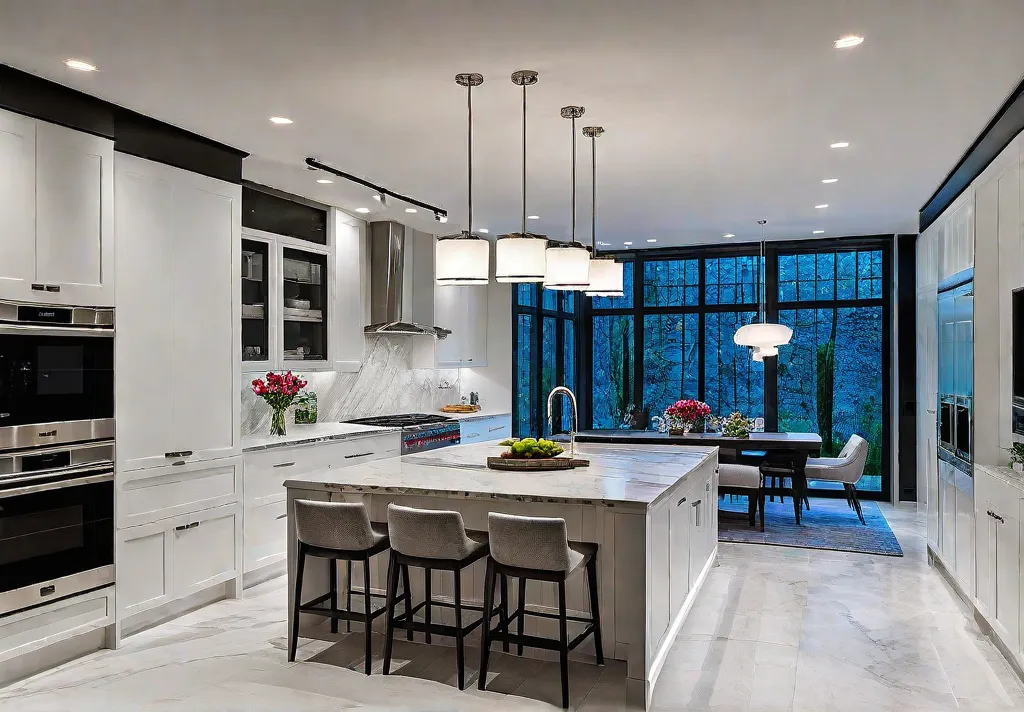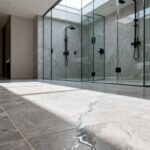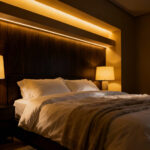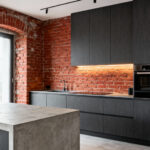What if I told you that your kitchen could be a masterpiece? A space so beautifully illuminated that it feels like an immersive art installation. In today’s modern homes, lighting has evolved beyond mere utility—it’s now a transformative design element with the power to sculpt ambiance and elevate experiences.
Picture this: as you step into your culinary haven, a symphony of light envelops you. Sculptural pendants glimmer like jewels, casting a warm, inviting glow over your island. Recessed luminaires blend seamlessly into the architecture, providing a clean canvas for your sleek cabinetry and appliances to shine. And with the tap of a button, you can effortlessly transition from a vibrant workspace to an intimate dinner setting, perfectly choreographed by intelligent home automation.
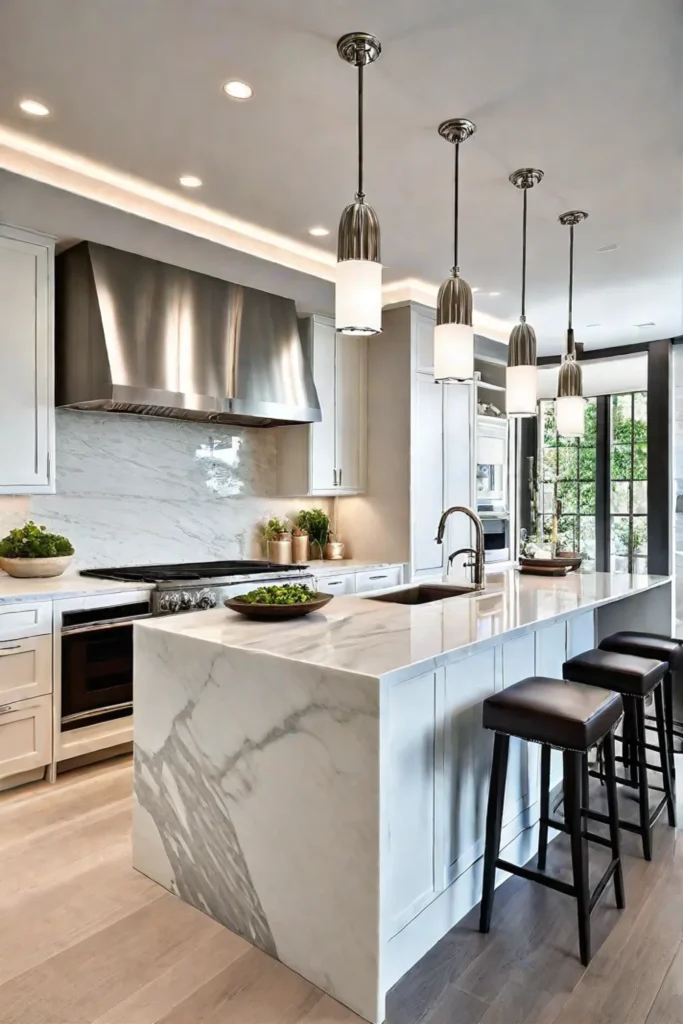
So, join me on a journey through intentional lighting design. We’ll explore how to masterfully layer different sources, from the dramatic spotlighting of track systems to the ambient warmth of natural sunlight. In the end, great lighting isn’t just about function—it’s about crafting spaces that nourish the soul and inspire us to live more beautifully.
Understanding Modern kitchen lighting
What if I told you the right lighting could make your kitchen feel like an art gallery? In modern homes, kitchen lighting has transcended utility to become a key part of the overall design aesthetic. It’s about crafting ambiance and experiences through the masterful interplay of illumination.
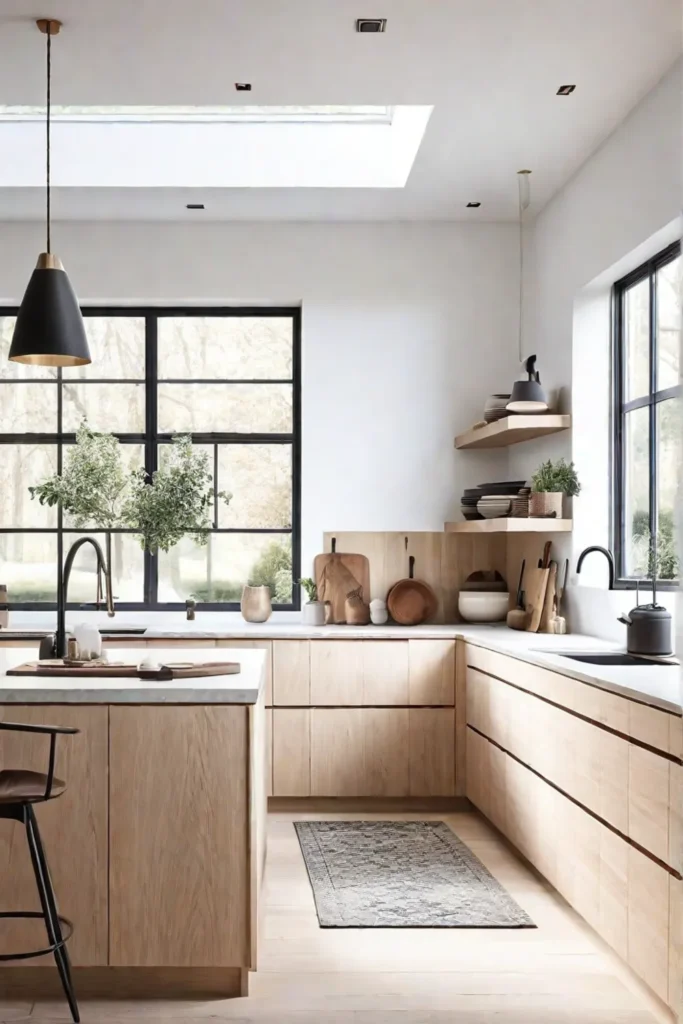
The Role of Natural Light
Before we dive into artificial lighting, let’s appreciate the role of nature’s luminescence. There’s something magical about a sun-drenched kitchen, with rays streaming through sheer curtains to cast a warm, welcoming glow. Smart designers maximize natural light by strategically positioning windows and using lighter color palettes that reflect and amplify brightness. After all, there’s no better lighting than that gifted to us by the cosmos.
Balancing Ambient, Task, and Accent Lighting
Of course, we can’t rely solely on sunbeams. modern kitchen lighting is a delicate balance of harmonious ambient, task, and accent lighting. Ambient lighting sets the mood through downlights, cove lighting, or stylish flush mounts. Task lighting, like under-cabinet strips, ensures you can see what you’re doing for meal prep. Finally, accent lighting adds depth through strategic highlights and shadows, making your space feel like an art installation.
The Transformative Power of Dimmers
One pro tip? Embrace dimmers. This simple technology allows you to sculpt the atmosphere to your whims – from an energizing buzz for hosting brunch to a soft, romantic glow for intimate dinners. With smart home integration, you can even program custom lighting “scenes” at the touch of a button. Dimmers are the great equalizer, empowering you to transform your kitchen’s ambiance as effortlessly as changing an outfit.
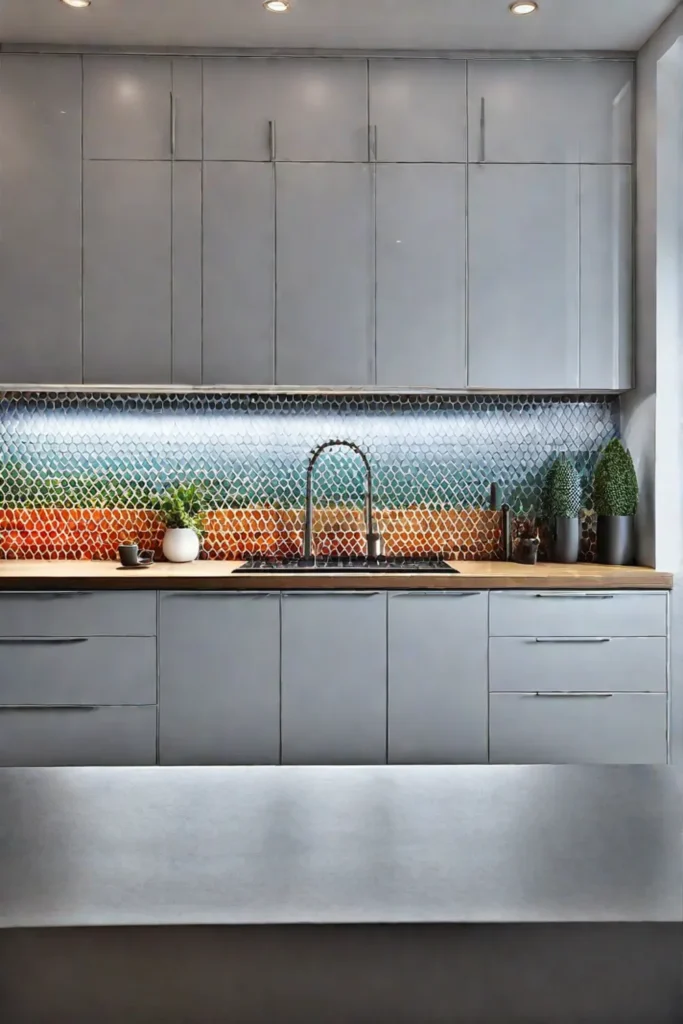
The right lighting design doesn’t just enhance a room’s functionality – it elevates the entire experience of inhabiting that space. With thoughtful planning and a keen eye for layering your modern kitchen can feel like an uplifting, artistic oasis to nourish the soul. Speaking of artistry, let’s explore how pendant lights can be the “jewels” illuminating your culinary kingdom.
Pendant Lights: The Jewels of Your Kitchen
What could be more eye-catching in a modern kitchen than a striking pendant light? These sculptural beauties aren’t just for illumination – they’re statement pieces that add glamour and personality. Pendant lighting has come a long way from its humble origins as a practical solution for bringing light down from high ceilings. Today’s designs transform these functional fixtures into dazzling focal points.
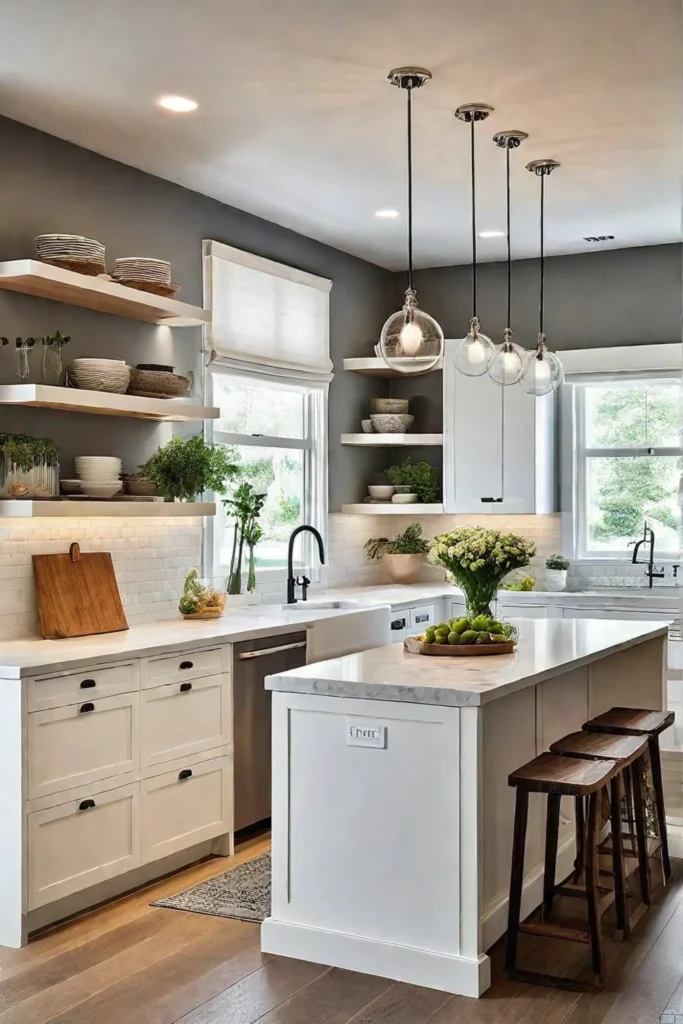
Choosing the Right Pendant Style
With the vast array of pendant styles available, finding the perfect one to complement your kitchen’s design aesthetic is crucial. Consider clean lines and geometric shapes in materials like polished metal or mouth-blown glass for a sleek, minimalist look. If you prefer a more organic, warm vibe, opt for woven rattan shades or ceramics with earthy tones. Don’t be afraid to make a bold statement with an oversized, avant-garde design that becomes a conversational art piece.
Placement and Hanging Height
Proper placement and hanging height are key to ensuring your pendants look stunning and provide ample task lighting. Large, sculptural pendants can become stunning focal points when hung over a kitchen island, while clusters of smaller pendants can add visual interest and ambient lighting over a dining area. Generally, pendants should hang between 28-36 inches above a countertop or table for optimal functionality.
Mixing Materials and Finishes
One of the beauties of pendant lighting is the ability to mix and match materials and finishes for a curated, collected look. A trio of glass pendants in varying shapes and colors can add depth and interest, or you can juxtapose the warmth of a natural wood pendant with the sleekness of a polished metal one. Don’t be afraid to use texture and contrast for a unique, personalized statement.
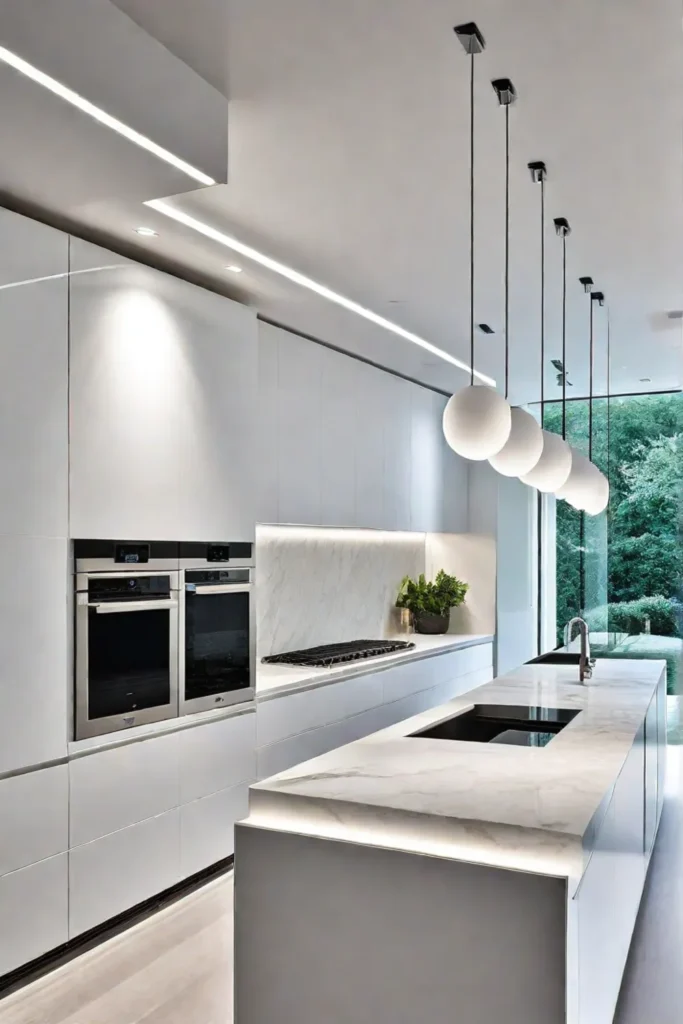
In the modern kitchen, pendant lights are more than functional fixtures—they’re the jewels that add sparkle and sophistication to your design. With careful consideration of style, placement, and materiality, these sculptural beauties can elevate your kitchen into a work of art.
While pendant lights steal the show, recessed lighting provides a seamless blend of function and style in the modern kitchen.
Recessed Lighting: A Seamless Blend of Function and Style
What if I told you the secret to achieving that coveted modern, minimalist aesthetic lies in the lights illuminating your kitchen? Recessed lighting has been a sleek staple since the mid-20th century, seamlessly integrating function and form. These unobtrusive luminaires elevate your culinary haven with their clean lines and even distribution of light.
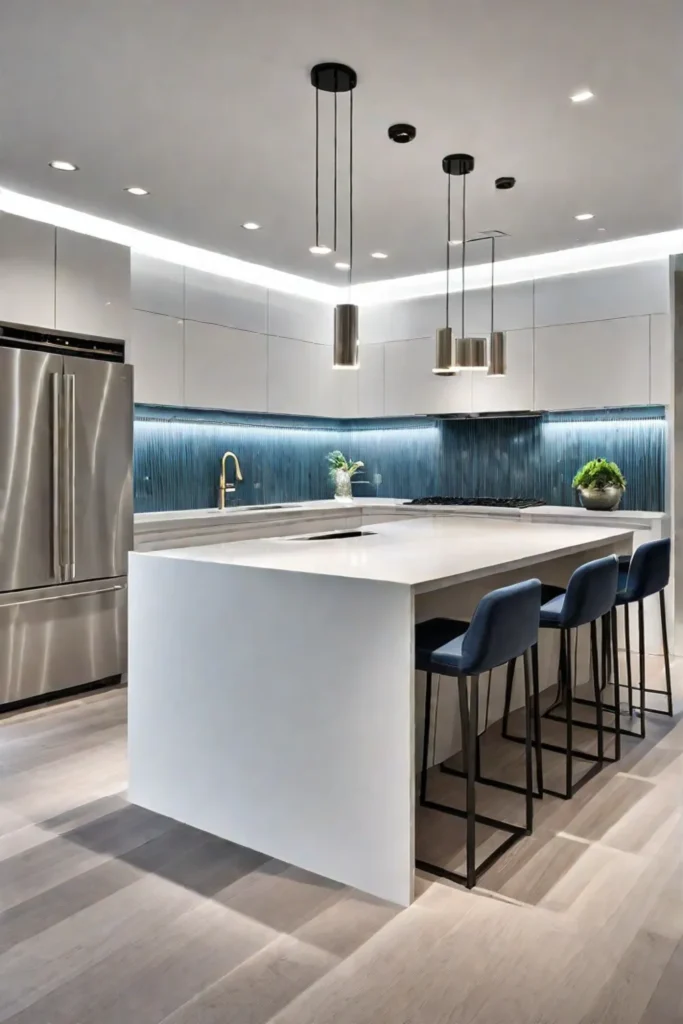
Types and Applications
The true beauty of recessed fixtures lies in their versatility. Narrow beam angles create dramatic spotlighting to showcase that sculptural vase or highlight the artistic brushstrokes of a beloved painting. Conversely, wide beam floods provide ambient lighting ideal for kitchen tasks like prep work and casual dining. You can even achieve visually interesting effects like wallwashing or rounded cylinder illumination with adjustable trim options.
Layout Considerations
Proper spacing is key to avoiding that dreaded “Swiss cheese” ceiling look. As a general rule, recessed lights should be positioned based on the room’s dimensions and purpose. For example, kitchens require more concentrated lighting over workspaces than living areas. Remember, recessed lighting works optimally when complemented by other layers like task and accent lighting.
Elevated Illumination
But we’re not just discussing function here – recessed fixtures offer endless opportunities for customized ambiance. Dimmers allow you to transition from a vibrant workspace to an intimate dinner setting with the simple sweep of a slider. Color temperatures ranging from warm to cool can evoke distinct moods and pair with your kitchen’s palette. The latest integrated LED technology also provides energy efficiency and longevity.
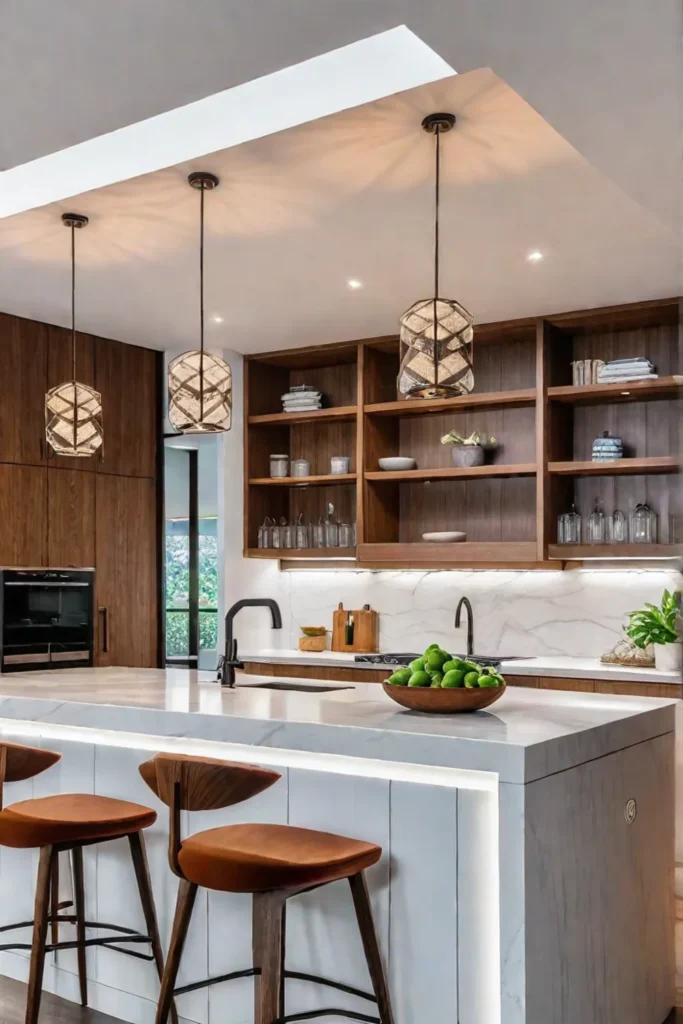
Recessed lighting epitomizes how good design transcends mere aesthetics. With strategic placement and the right specifications, these minimalist marvels become integral to your modern kitchen’s atmosphere and experience. Seamlessly blending into your architecture, they provide essential utility while letting your space’s other elements shine.
The beauty of intentional lighting lies in its power to transform and elevate any environment – a philosophy that naturally transitions us into our next featured luminary…
Track Lighting: Flexibility and Focus for the Modern Kitchen
Have you ever found yourself squinting under the harsh glare of a single overhead fixture while trying to cook a gourmet meal? Or have you struggled to illuminate your stunning new countertops properly? In the modern kitchen, adaptable lighting is necessary for function and style. That’s where the beauty of track lighting comes in.
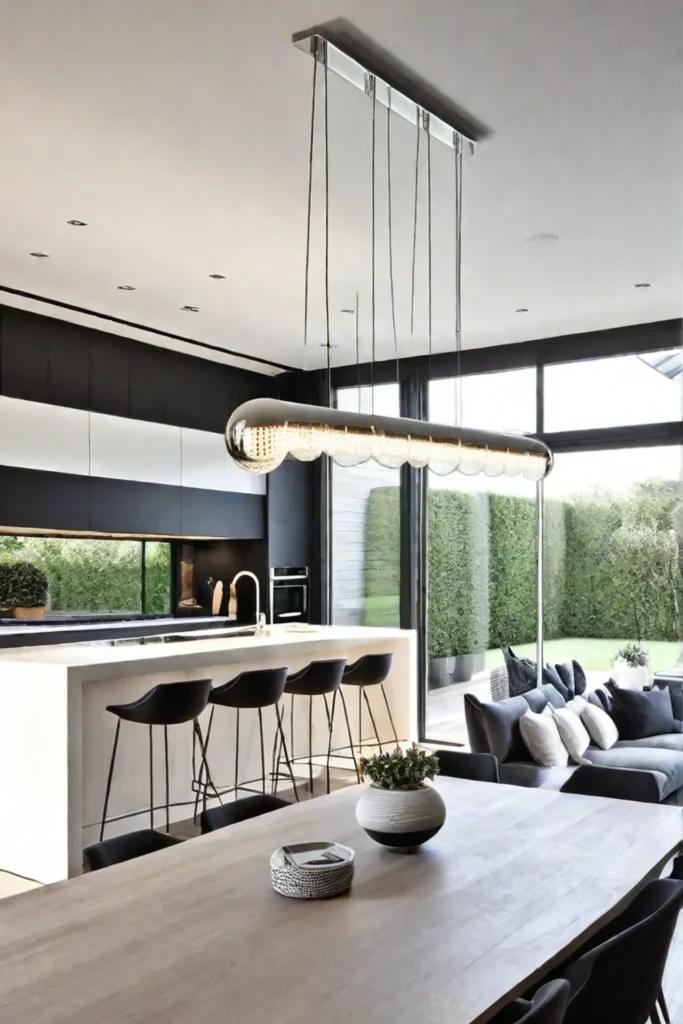
Different Track Styles and Configurations
While track lighting rose to prominence in the 1970s with its versatile, industrial-chic aesthetic, today’s designs have seamlessly complemented a range of kitchen styles. From sleek minimalist bars to sculptural curved configurations, there’s a track system to highlight your space’s unique architecture. I love how cleanly a slim, low-profile track can integrate into modern cabinetry for a seamless look.
Choosing the Right Track Heads for Your Needs
But track lighting’s true versatility lies in the array of focused heads you can customize. Want to spotlight that showstopping tile backsplash dramatically? A directional head will do the trick. Need targeted task lighting over your prep area? An adjustable pinhole beam has you covered. Mix and match head styles along the track for striking visual impact. My favorite is pairing a few sculptural coned shades with utilitarian bullets for an unexpectedly modern twist.
Intelligent Illumination
Of course, in today’s smart home era, track lighting has kept pace. Many systems now integrate seamlessly with home automation, allowing you to control light levels and direction from your mobile device effortlessly. Embracing energy-efficient LED bulbs only amplifies the eco-conscious appeal. So let your lighting adapt to every culinary need – all while reducing your carbon footprint.
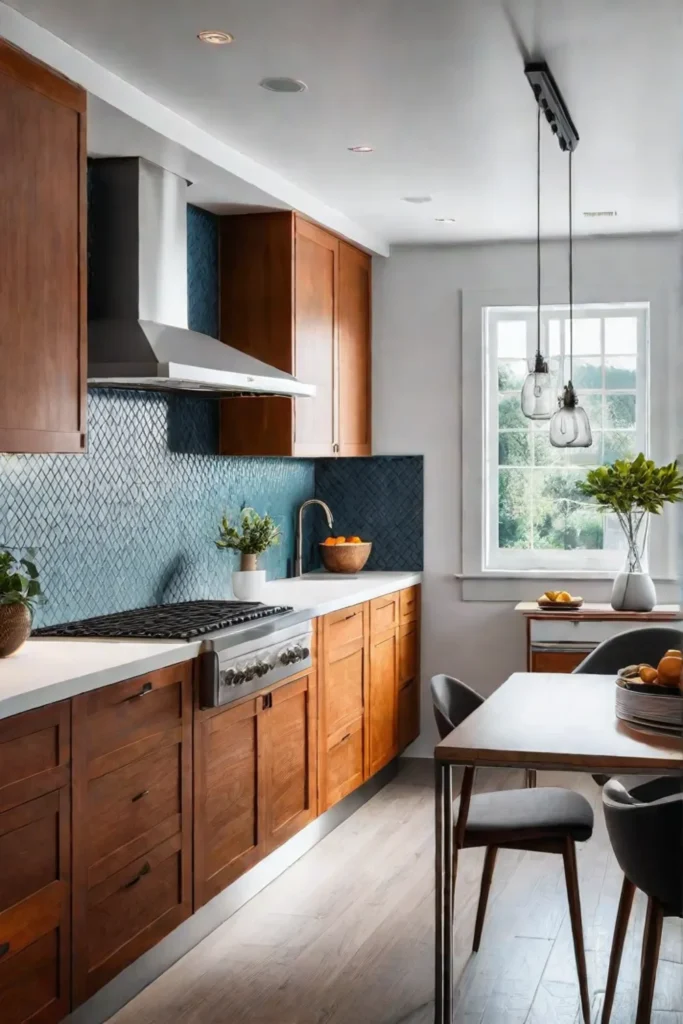
With its unparalleled flexibility and precise focus capabilities, track lighting deserves a starring role in your modern kitchen renovation. Imagine the warm, inviting ambiance you can create by expertly layering it with other fixtures. But we’ll explore that cohesive lighting philosophy next…
Creating a Cohesive Lighting Design in Your Modern Kitchen
What if I told you that the right lighting scheme could transform your kitchen from a purely functional space into a modern masterpiece? Illumination is an often overlooked yet essential element in achieving that coveted, cohesive aesthetic. But fear not, my design-savvy friends – I’m here to guide you through the art of crafting a harmonious lighting design that will elevate your culinary haven to new stylish heights.
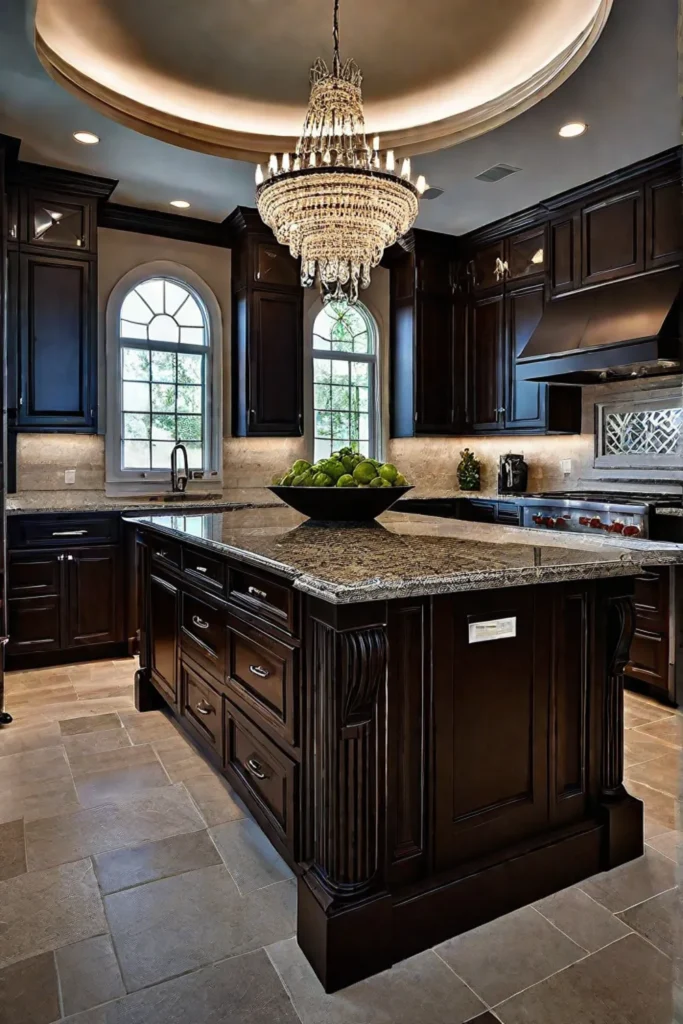
Harmonizing Different Lighting Elements
The key to a successful lighting plan lies in layering various sources to create a balanced, multidimensional effect. Think of it as a symphony, where each type of light plays a distinct role in the composition. Pendant lights, for instance, can serve as the melodic focal points, drawing the eye to your stunning kitchen island or dining area. On the other hand, recessed lighting provides the ambient backdrop, much like the gentle hum of violins setting the mood.
But we mustn’t forget the unsung heroes: under-cabinet lights. These task-oriented luminaries are the percussionists of the ensemble, ensuring you have ample illumination for all your culinary endeavors. By thoughtfully combining these elements, you’ll create a harmonious lighting experience that looks stunning and caters to your practical needs.
Integrating Smart Home Technology
In our modern age, why settle for mere aesthetics when you can also embrace the convenience of smart home technology? Imagine controlling your kitchen’s lighting with a simple voice command or a tap on your smartphone. No more fumbling for switches in the dark or wasting energy on unnecessarily bright lights.
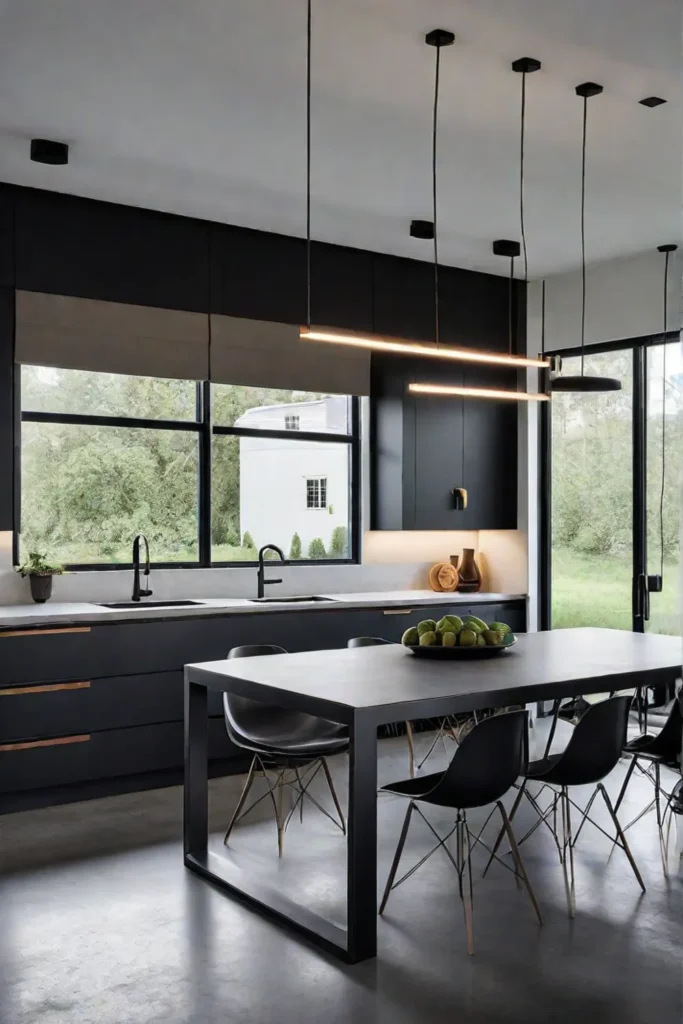
Smart bulbs and switches offer possibilities, from scheduling your lights to gradually brighten in the morning, mimicking the gentle rise of the sun, to setting the perfect ambiance for a romantic dinner with a few taps. And let’s not forget the energy-saving benefits – these intelligent systems can automatically adjust brightness levels based on occupancy or time of day, ensuring you’re not wasting precious resources.
Complementing Your Kitchen’s Style
Of course, no lighting design would be complete without considering the overall aesthetic of your modern kitchen. Are you a devotee of Scandinavian design’s clean lines and minimalist elegance? Or perhaps your heart beats for mid-century modernism’s organic curves and warm tones? Whatever your style, there’s a lighting solution that will seamlessly complement your vision.
For those who embrace the purity of minimalism, consider sleek, streamlined fixtures with a monochromatic palette. Think sculptural pendants crafted from matte black or brushed nickel, casting a soft, diffused glow. On the other hand, if you’re drawn to the inviting allure of mid-century modern, seek out fixtures with organic forms and rich materials like wood or brass.
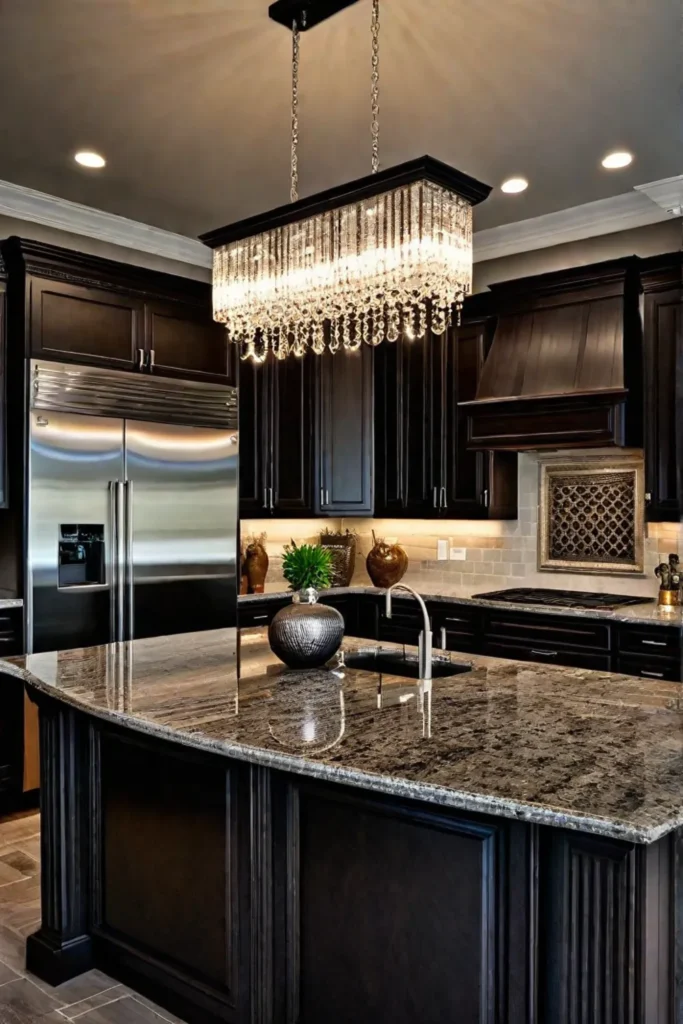
Remember, the key to a truly cohesive design lies in the intentional curation of each element, ensuring that your lighting choices harmonize with the overall aesthetic, creating a space that is not only visually stunning but also a reflection of your unique style.
Lighting is the unsung hero of modern kitchen design, with the power to transform a space from ordinary to extraordinary. By thoughtfully layering different sources, embracing smart technology, and complementing your kitchen’s style, you’ll create a cohesive, functional, and undeniably stylish sanctuary that inspires culinary adventures and leaves your guests in awe.
Final Thoughts
We’ve discovered that lighting is the unsung hero of modern kitchen design, with the power to transform a space from ordinary to extraordinary. By thoughtfully layering different sources like sculptural pendants, recessed luminaires, and adaptable track systems, we can create a harmonious, multidimensional experience that caters to function and style.
But true mastery lies in intentionally curating each element to complement your kitchen’s unique aesthetic, whether it’s the clean lines of minimalism or the inviting warmth of mid-century modernism. And with the integration of smart home technology, we can effortlessly control and customize our lighting schemes, ensuring our culinary havens always radiate the perfect ambiance.

So, I invite you to embrace the art of illumination, to see your kitchen not just as a workspace but as a canvas for crafting inspired living. When we intentionally sculpt light and shadow, we elevate our surroundings from mere rooms into uplifting, artistic sanctuaries that nourish the soul.
After all, great design isn’t just about looking good – it’s about living beautifully. And what could be more beautiful than a space that seamlessly blends function, form, and the transformative power of light? So go forth, my friends, and let your kitchens shine as the modern masterpieces they were always meant to be.
